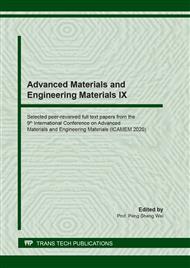p.113
p.122
p.129
p.136
p.145
p.154
p.159
p.165
p.170
Study the Influence of Processing Oil on the Physical Mechanical and Adhesion Properties of Ethylene Propylene Diene Monomer/Chlorobutyl Blend to Polyester Fabric
Abstract:
In this paper, the influence of paraffinic oil on the physical mechanical, thermal and adhesion properties of three blends of EPDM Buna EP T.6465, Keltan 5260Q and Keltan 6160 D and CIIR have been investigated. The results showed that the tensile strength values and elongation at break of keltan 5260Q/CIIR and keltan 6160 D/CIIR with 10 wt.% paraffinic oil represent the improvement of 57.8%, 57.6% and 71% to 81% respectively, compared with one without oil. The mean peel force of EPDM keltan 6260D with 10% oil loaded is about 36% and 32.5% higher than that of EPDM keltan 5260Q and EP.T 6465 blends respectively. With suitable oil content, in this case is 10% wt., the thermal resistance of keltan 5260 Q and 6160D seems to be higher than that of without processing oil and suitable for thermal resistance rubber application.
Info:
Periodical:
Pages:
145-153
Citation:
Online since:
September 2020
Keywords:
Price:
Сopyright:
© 2020 Trans Tech Publications Ltd. All Rights Reserved
Share:
Citation:


